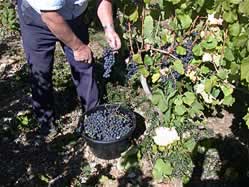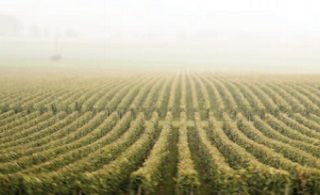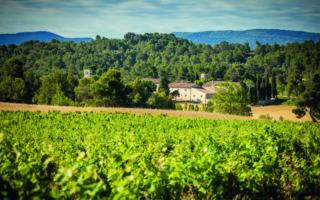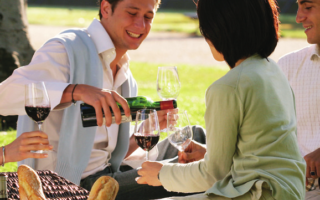Cahors Red Wine

Powerful and elegant
The vineyards of Cahors have twenty centuries of history behind them: the Renaissance poet Clement Marot, Pope John XXII, Francois I and Henry IV have all been its ambassadors. Mass wine for the Russian Orthodox Church, or sovereign remedy for Tsar Peter the Great, Cahors wine has come down to us over the centuries. After the dramatic slump in its fortunes caused by phylloxera in the years 1883-1885, in 1971 it was awarded AOC status for its 4,200 hectares.
The resurrection of Cahors as a quality wine was largely due to the work of those who, through hard work and skill, managed to recreate the essential alchemy of the original grape varieties. This insistence on quality spread throughout the AOC zone, enabling the wine to recover it’s former excellence.
Flamboyant personalities
Sunshine, soils and skills all combine to give Cahors wines which inherit their personality from their principal grape variety, the Auxerrois, with an admixture of Tanat and Merlot. Pleasant when drunk young, many make excellent wines for laying down (up to twelve years and more). 70% of the vineyards are concentrated in the Lot valley between Cahors and Puy L’Eveque; here, the wines are powerful, full-bodied and very fruity. On the causse above Cahors, they are a little less robust, but have distinctive finesse and elegance.
[mrb]
The wine waiter’s advice
A young, slightly tannic Cahors is the ideal accompaniment to duck or goose “fritons”, meat in sauce and cured meats. An old, mature Cahors with subtle, refined aromas marries perfectly with truffles, red meat served with ceps, and game. Serve a light, young, fruity Cahors at 14 or 15 degrees. An old Cahors should be decanted and served at 15 to 16 degress.
Coteaux du Quercy wines
The Vins des Coteaux de Quercy (AO-VDQS) are to a certain extent the “little brothers” of Cahors wine, but they are quite capable of holding their own. They are the product of a long wine-growing tradition in the Lot and the Tarn et Garonne. Proud of the Cabernet variety which makes them different, they are pleasant wines which have obtained the Qualite Superieure label thanks to the wine-growers’ know-how.
Lot Table Wines
These wines (Vins de pays) from small production zones have no fear of asserting their character in the shadow of the local “stars”. Coming from the Cahors zone itself, the Coteaux de Quercy or de Glanes, they are white, rose or red, agreeable to drink whilst still young, ideal on a summer’s evening in the garden. Cheerful, light and fruity, they have delicate aromas.
©CDT Lot
Share to: Facebook Twitter LinkedIn Email
More in cahors, garden, history, inheritance, summer, wine, work
Leave a reply
Your email address will not be published. Required fields are marked *



